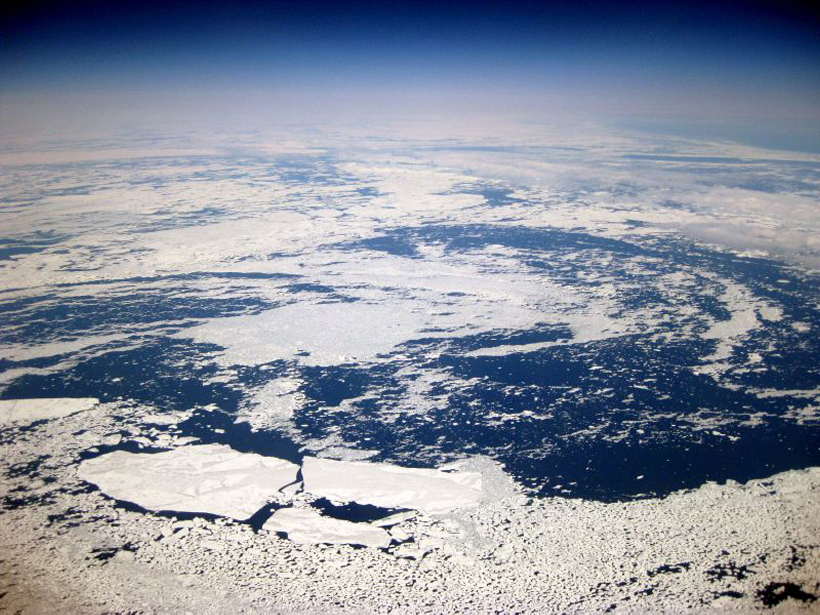Source: Geophysical Research Letters
The massive conveyor belts of the ocean and atmosphere transfer energy around the globe and drive Earth’s climate. Improved models and increases in computer power are starting to allow scientists to get a better glimpse of future surface conditions in the Atlantic by taking into account changes in the ocean heat conveyor. The ocean’s influence on sea ice is not obvious, but in a new study, Yeager et al. argue that it plays a key role in accurate projections of sea ice.
The researchers analyzed simulations from the Community Earth System Model, modeling both atmosphere and ocean circulation. They found that decadal-scale trends in Arctic winter sea ice extent are largely explained by changes in ocean circulation rather than by large-scale external factors like anthropogenic warming.
The team emphasized the influence of the thermohaline circulation (THC), a global current that carries heat around the planet and that experts believe has been slowing down in the Atlantic since about 2000. Although anthropogenic warming may produce a long-term global temperature rise, the THC slowdown contributes to short-term cooling in the subpolar Atlantic and, consequently, a decline in the ice melt rate. The researchers make the connection between these circulation changes and satellite observations taken between 2005 and 2015 that show a positive trend in winter ice cover. In other words, slowing circulation hinders heat transport to the North Atlantic, allowing surface waters to stay cool and sea ice to expand.
Ultimately, the rise of global temperatures will generate a loss of sea ice cover over the coming century. This study is a stepping-stone toward the ultimate goal of decadal climate prediction, which is vital to understanding and anticipating the short-term trends and changes that communities will be tackling in the near future. (Geophysical Research Letters, doi:10.1002/2015GL065364, 2015)
—Lily Strelich, Freelance Writer
Citation: Strelich, L. (2016), Atlantic sea ice could grow in the next decade, Eos, 97, doi:10.1029/2016EO044955. Published on 4 February 2016.
Text © 2016. The authors. CC BY-NC 3.0
Except where otherwise noted, images are subject to copyright. Any reuse without express permission from the copyright owner is prohibited.

